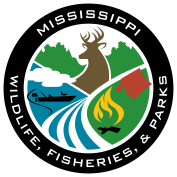
- Log in to post comments
Prescribed fire plays an essential role in creating and sustaining quality habitat in pine and hardwood systems. Wild turkeys are a species that rely on the use of regular prescribed fire to maintain their habitat. A question that always arises with turkeys and the use of prescribed fire in MS is “Will burning in March-May affect and or damage nesting for wild turkeys”?
To answer this question there are many factors that come into play. First, it is important to decide what your management goals are for the property. Is the goal to manage primarily for wild turkeys or combination of game and non-game species? If your goal is to sustain and enhance your turkey population then the use of prescribed fire is necessary.
Here is what we know from research regarding the effect prescribed fire has on nesting.
- Maintaining early successional habitat using prescribed fire is beneficial for both nesting and brood rearing.
- Not all nests are laid at the same time. In a GA study, a small percentage of nests (<12%) were destroyed by fire. Of these nests that were destroyed 75% of hens re-nested. Hens may re-nest up to 3 times.
- Without optimal ground cover from disturbance such as prescribed fire, hens and nests are more susceptible to predation.
- Turkeys avoid nesting in areas that have not been burned in more than 3-5 years. Hens choose to nest in areas of plant communities that are 2-3 years post burn.
Even with all this knowledge there are still ways to decrease the risk of damaging nests with prescribed fire.
- Seasonality- Prescribed burning during any time of the year will help wild turkeys. Timing your fire in the dormant season or early spring can help reduce the risk of damaging nests. Although, the benefits of using fire in the all stages of the growing season to promote forb growth and inhibit undesirable woody growth should not be overlooked.
- Frequency- Burning every 1-3 years will keep ample amounts of nesting habitat on the property and enhance the usage of a property for the purpose of nesting.
- Patch size- Burning small blocks (50 acres or less) at a time can decrease the risk of damaging nests as opposed to burning larger areas such as 500 acres at a time. Also, if possible, checkerboarding burn blocks across the property with different frequencies will increase the diversity of plant communities and decrease the risk of damaging nests due to preference of forage conditions for nesting hens.
In conclusion, science shows little to no population level impacts on wild turkey nesting using prescribed fire. The benefits of early succession through fire does not outweigh the minimal potential risk of damaging wild turkey nests. So, as landowners and land managers continue to take advantage of a great management tool such as prescribed fire and enhance your property for wild turkeys.
For more information on the use of prescribed fire for wild turkeys visit our website at
mdwfp.com/privatelands